What's New
Displaying results 3401 - 3410 of 4052
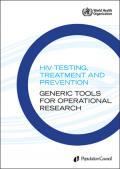
Resource | Publications,
The combined efforts of countries and international partners have resulted in substantial advances in HIV treatment and prevention. Nonetheless, access to key HIV services remains low in many settings around the world, and there are still major research gaps about the best way to expand HIV testing, prevention and treatment, especially in resource-limited settings.
The Generic Tools project is part of WHO's broader efforts to facilitate operational research on HIV testing, treatment and prevention. To identify the information needed to improve HIV programmes, the HIV Department of WHO held international meetings, multi-stakeholder consultations and local workshops, and reviewed the evidence and the availability of data collection tools. These activities highlighted a number of research questions that were amenable to operational research, had relevance in diverse settings, and had the potential to improve programmes and strengthen the evidence base for policies.
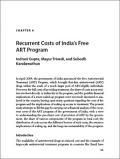
Resource | Publications,
In April 2004, the government of India announced the Free Antiretroviral Treatment (ART) Program, which brought first-line antiretroviral (ARV) drugs within the reach of a much larger pool of ARV-eligible individuals. However, the full costs of providing treatment, the share of costs across entities involved directly or indirectly in the program, and the possible financial implications of a more scaled-up program were not much discussed or analyzed in the country, leaving open many questions regarding the cost of the program and the implications of scaling up access to treatment. The present study attempts to fill this gap by carrying out a financial analysis of the recurrent costs of the ART program of the government of India, with a view to understanding the per-client cost of provision of ART by the government, the share of various components of the program in total cost, the distribution of costs across the different bearers of such costs, the resource implications of scaling up, and the long-run sustainability of the program.
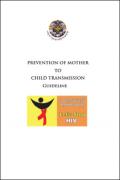
Resource | Guidelines,
Considering the spread of HIV infection among women of the reproductive age, mother–to-child transmission has become a great concern in the area of HIV prevention and health services. The first mother-to-child transmission in Bhutan was reported in the year 2002. Seven cases have now been officially documented. This covers nearly 9% of the total HIV infection in Bhutan. It is inevitable that more pregnant women will be affected in the coming years.
Mother to-child transmission of HIV is the most significant source of HIV infection in children below age of 10 years. Transmission can occur during pregnancy, delivery and after delivery through breast milk. In the absence of appropriate interventions infected child are likely to survive infancy. The extent of HIV infection among pregnant women is often used as an indicator of HIV penetration into the population at large.
The Royal Government has responded by adopting the prevention of mother to child transmission (PMTCT) as an integral part of the nation's response to the HIV/AIDS catastrophe. PMTCT will be a part of a wider response to HIV/AIDS, which includes expanding access to care and support for HIV infected mothers and their families, including treatment of opportunistic infections and accelerating access to treatment. PMTCT prevention should not stand in isolation, but it should be integrated to existing Health care infrastructures and Reproductive Health Services.

Resource | Publications,
This research study on index of stigma and discrimination against HIV-positive people was aimed to promote and support the advocacy of human rights issues in Thailand. It was implemented by the Thai Network of People Living with HIV/AIDS (TNP+) and supported by the Joint United Nations Programme on HIV/AIDS (UNAIDS).
Findings acquired through this project can enable both Thailand and other countries to understand these prevailing social phenomena in conjunction with national rights-related policies, inform program design aiming to resolve and reduce HIV stigma and discrimination issues at implementation level, and advocate for national-level policy.
Data collection took place in mid-2009 through interviews to gather past experiences of positive people in different parts of Thailand. Therefore, the data recorded were incidents that occurred between 2008-2009.
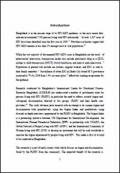
Resource | Publications,
Bangladesh is in the nascent stage of its HIV/AIDS epidemic, as the most recent data indicate an estimated 7,500 persons living with HIV nationwide. In total, 1,207 cases of HIV have been identified since the first case in 1989. Prevalence estimates suggest that HIV/AIDS remains at less than 1% amongst most at -risk populations.
Research conducted by Bangladesh’s International Centre for Diarrhoeal Disease Research, Bangladesh (ICDDR,B) has underscored a number of problematic areas for persons living with HIV (PLHIV), in particular the need to address societal stigma and subsequent discrimination directed at two groups: PLHIV and their health care providers. This study advances prior research with an attempt to document stigma and discrimination both quantitatively using the Stigma Index and qualitatively using focused, in-depth interviews experienced by the PLHIV in Bangladesh.
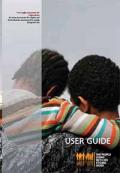
Resource | Tools,
HIV stigma and discrimination adversely affect every aspect of life for people living with HIV and their families. In many settings, an HIV diagnosis still can be as devastating as the illness itself, leading to job loss, school expulsion, violence, social ostracism, loss of property, and denial of health services and emotional support. People living in fear are less likely to adopt preventive behavior, come in for testing, disclose their sero-status to others, access care and adhere to treatment.
This user guide has been created for teams implementing the People Living with HIV Stigma Index in their communities. This user guide contains background information on the index and its intended purpose; an introduction to the questionnaire and the data gathering process; and practical guidance for training interviewers, ensuring the interview process is conducted in an ethical manner, and for effective data entry and analysis. The guide also includes tips for communicating the research findings and using them to advocate for the rights of people living with HIV.
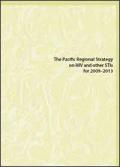
Resource | Publications,
Since the first case of HIV in the region was reported in 1984, there have been various responses at regional and national levels. One major landmark was the endorsement of the Pacific Regional Strategy on HIV and AIDS (2004–2008) by the Pacific Leaders Forum in 2004. The endorsement by the region’s leaders has facilitated the mobilisation of resources to support the strategy’s implementation.
The Pacific Regional Strategy on HIV and other STIs (2009–2013) will build on the successes and strengths of previous work and address some of the challenges in supporting national efforts to prevent and control HIV. Simultaneously, because other STIs are a key risk factor for the transmission of HIV in the Pacific, the strategy will support national efforts to combat them. It will also strengthen work at the regional level through improved coordination, collaboration and partnerships between regional organisations and national programmes.
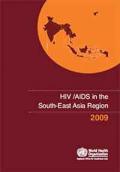
Resource | Publications,
Since the first case of AIDS was reported from Thailand, a quarter of a century ago, the epidemic in the South-East Asia Region has grown massively. Today, HIV has been reported from 10 of 11 countries in the Region. Nearly 3.5 million people are currently living with HIV/AIDS in the Region, and the epidemic is still evolving.
HIV policies and programmes should be based on evidence and firmly rooted in the science of epidemiology. This annual report on “HIV/AIDS in the South-East Asia Region 2009”, presents the current epidemiological situation as well as recent progress in universal access to HIV prevention, care and treatment, based on data reported by Member countries of the Region.
The report highlights that HIV continues to disproportionately affect marginalized populations. Transmission of HIV is fueled by risky sexual and injecting practices and high rates of sexually transmitted infections.While remarkable progress has been made in assuring safe blood transfusion services, expanding testing and counselling facilities and to some extent in scaling-up antiretroviral treatment programmes, there are many shortfalls that need urgent attention.

Resource | Publications,
This book offers an original perspective on HIV and AIDS as a development issue in South Asia, a region with a heterogeneous epidemic and estimated national HIV prevalence rates of up to 0.5 percent. The analysis challenges the common perception of HIV and AIDS, which has been shaped to a large extent by analysis of HIV and AIDS in regions with much higher prevalence rates. Three risks to development are associated with HIV and AIDS in the region: First, the risk of escalation of concentrated epidemics. Second, the economic welfare costs. Third, the fiscal costs of scaling up treatment.
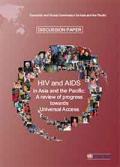
Resource | Publications,
This background paper reviews progress made in the Asian and Pacific region in line with international commitments, with particular attention to the Universal Access targets developed for low and concentrated epidemic countries in Asia and the Pacific through regional and civil society consultations in 2006. Based on these findings, the paper also reviews the main challenges and identifies ways forward in scaling up the response to HIV.
The paper draws on information from the 2008 country reports prepared to measure progress towards the targets set out in the Declaration of Commitment on HIV/AIDS at the United Nations General Assembly Special Session (UNGASS) in 2001. The quality of available data varies and should be considered indicative of progress and trends only. Where appropriate, data is supplemented by information from the UNAIDS 2007 December Epidemic Update and other published sources.





